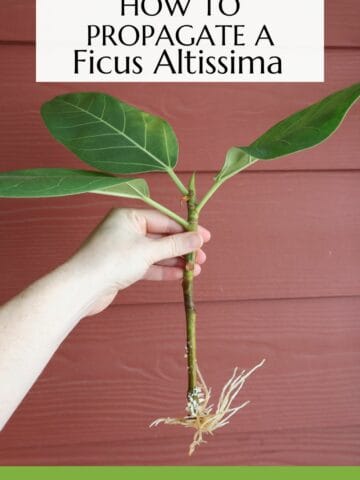Looking to add a new, unique houseplant to your collection? Here is everything you need to know a bout Ficus Altissima care!
Are you thinking about enriching your home with a vibrant green plant? For all those Ficus lovers out there – we have the perfect suggestion for you!
Since this magnificent plant has so many varieties, we’ve decided to introduce a favorite today.
Commonly known as Ficus little gem, the Altissima variety is a gorgeous tree that will spruce up any space you put it in.
I recently grabbed this plant at Lowes and was super attracted to the large, variegated leaves. It's gorgeous!
The Ficus genus, commonly known as fig trees or figs, encompasses a diverse group of plants with over 800 different species.
Native to tropical and subtropical regions around the world, Ficus plants have gained immense popularity as houseplants due to their attractive foliage, adaptability to indoor environments, and relatively low maintenance requirements.
Ficus plants are known for their lush green leaves, varying leaf shapes, and interesting growth habits. They can range from small, compact varieties suitable for tabletop displays to large, tree-like specimens that can serve as stunning focal points in spacious interiors.
Some popular Ficus species for indoor cultivation include Ficus elastica (Rubber Tree), Ficus lyrata (Fiddle-Leaf Fig), and, of course, Ficus Altissima.
Ficus Altissima, also known as Ficus little gem, stands out among the many Ficus varieties due to its unique features.
This particular species showcases large, variegated leaves with a glossy sheen, characterized by vibrant patterns of bright green and bright yellow.
The striking foliage of Ficus Altissima adds a touch of elegance and liveliness to any space, making it a desirable choice for plant enthusiasts and interior decorators alike.
Overall, the Ficus genus has captivated plant enthusiasts for its diverse range of species, and Ficus Altissima stands out as a unique and desirable variety.
Its stunning variegated leaves, historical significance, and manageable care requirements make it a sought-after addition to any plant collection or interior design scheme.
Keep on reading and discover how to properly do Ficus Altissima care!
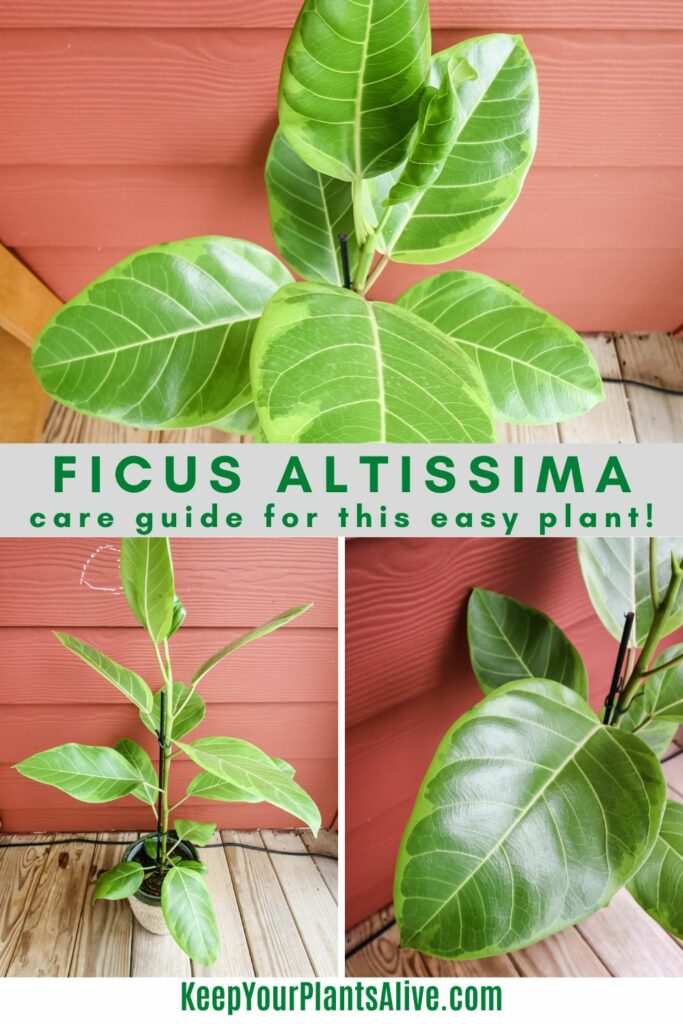
What is a Ficus Altissima?
For those of you who’ve never heard of the name before, this type of Ficus is a part of the Moraceae family, and its plant life begins as an epiphyte.
After a while, the roots start penetrating deep into the ground, creating a solid structure so the plant can stand on its own.
Its leaves are thick and a bit pointed toward the end, characterized by a gorgeous glossy sheen.
There is a variation between bright green and bright yellow patterns on each leaf, giving the plant a vibrant and unique look.
A fun fact about this particular Ficus specimen – it’s believed that it was the tree under which Buddha gained sacred enlightenment.
Once the word spread, people began to value it as a plant that brings holiness and spiritual calmness to any home.
If you’ve already decided to get this plant for your home, let us tell you how to take care of a Ficus Altissima.
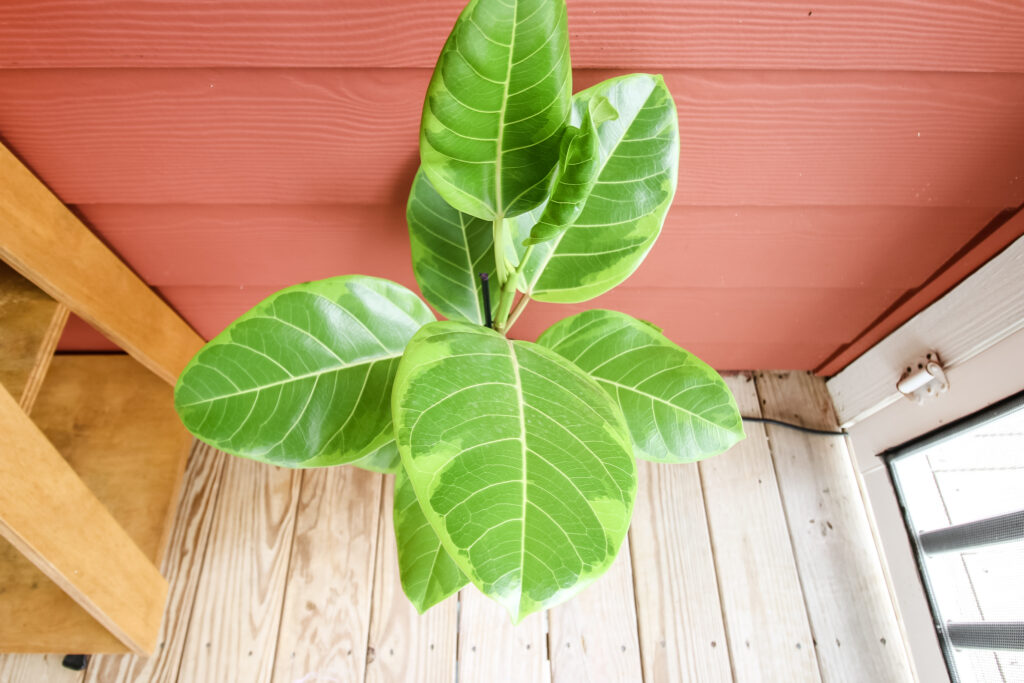
How to care for a Ficus Altissima
There are a few things to consider in this Ficus Altissima care guide, which include the plant’s basic needs, such as water, light, soil, etc.
Given its nature and gorgeous appearance, this plant also has some specific requirements, which we managed to mention below.
Potting and soil requirements for a Ficus Altissima
Ficus Altissima has some specific soil requirements. Namely, It thrives best when it doesn’t sit in soggy soil, so make sure to never leave the plant in soaking soil.
Adding drainage holes to your pot will help excess water to drain away and keep the roots from getting soggy.
When it comes to potting, opt for a pot that has drainage holes about two or three times wider than the diameter of the root ball of your plant. This is the only way to prevent overwatering and possible root rot.
Additionally, the pH level of the soil should be neutral. Any indoor potting mix or cactus soil is a good option for those wishing to have this Ficus species at home.
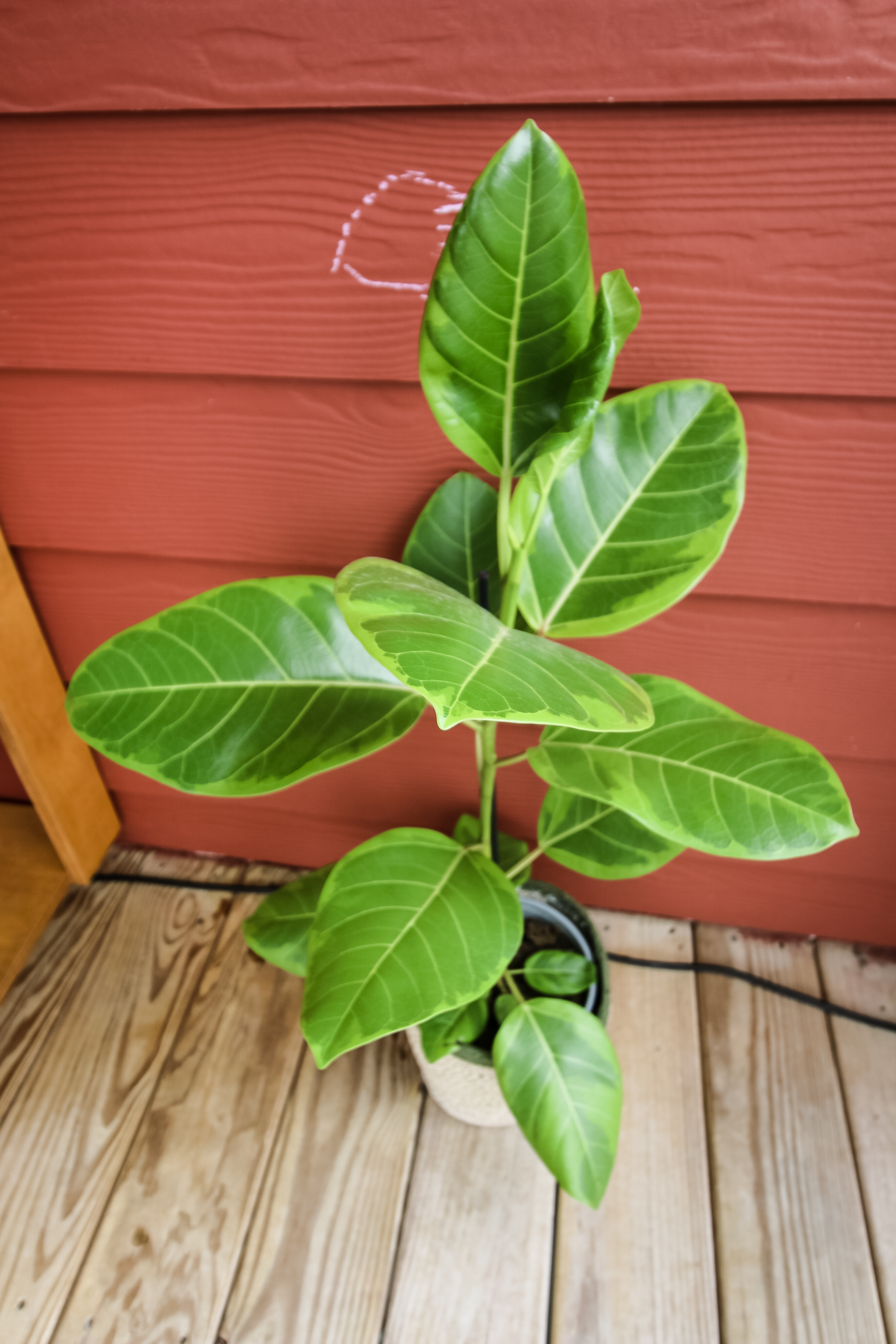
How to water a Ficus Altissima
The water requirements are a bit different for this one, especially because this particular type of plant requires a little less water.
To decide when and how to water a Ficus Altissima, then feel the top 4 inches of the soil. If they are dry, then you can add some water.
If this sounds a bit too complicated for you, then you should get a moisture meter. It’s the best way to measure the soil's moisture deep inside before you add more water.
Once it’s time to water the plant, add water to the top of the soil until it starts to come down from the bottom of the pot (through the drainage holes).
Take the drainage tray, empty it immediately, and put the pot in the sink or bathtub so that all the water comes out of it. This is a very practical way to prevent any root rot.
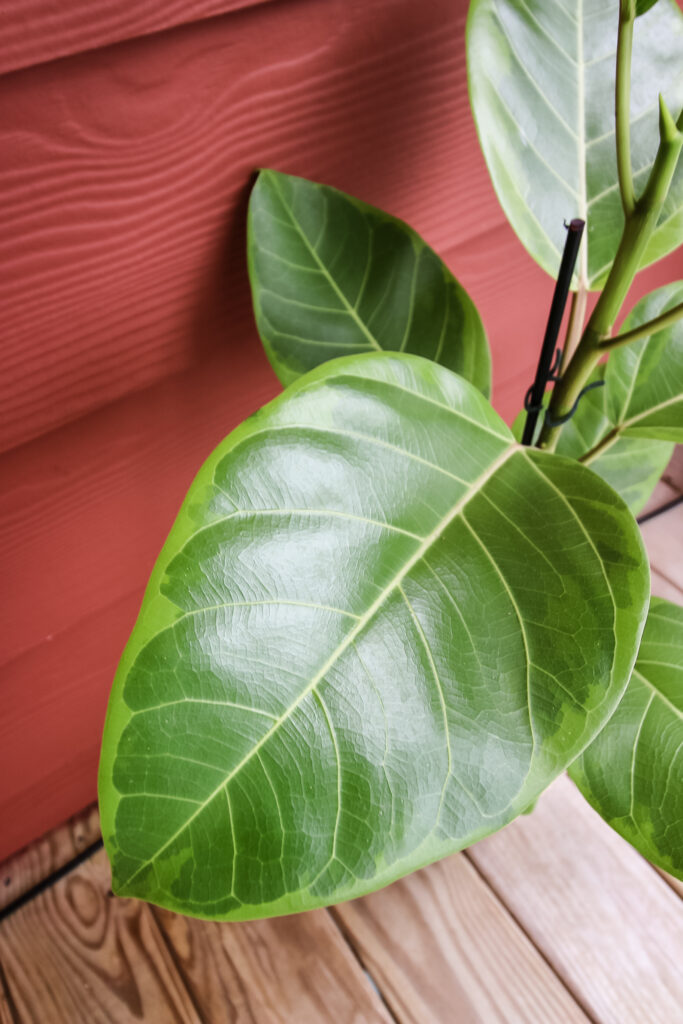
Ficus Altissima lighting needs
This particular type of ficus requires bright but indirect light. Since the plant is known for its beautiful variegation, giving it proper light is an important part of the Ficus Altissima care guide.
If the indoor conditions are not right for it, then it might result in fading in the variegation. The leaves can be faded from both too much and too little sun!
And if you’re having a hard time deciding where to put your focus, allow us to help!
If you have a window facing east, that will make a perfect choice. This way, the plant will get enough indirect light during the day, with a little bit of sunshine in the morning (never after 10 AM).
Any south or west-facing window is a good choice, as well. If you opt for this, ensure the plant doesn’t get much sunlight -it will burn, resulting in large crispy dark brown spots all over the leaves, which won’t fade away over time.
For optimal growth, your north-facing window is probably not the best option. It will not get enough light overall, resulting in difficulty maintaining the variegation.
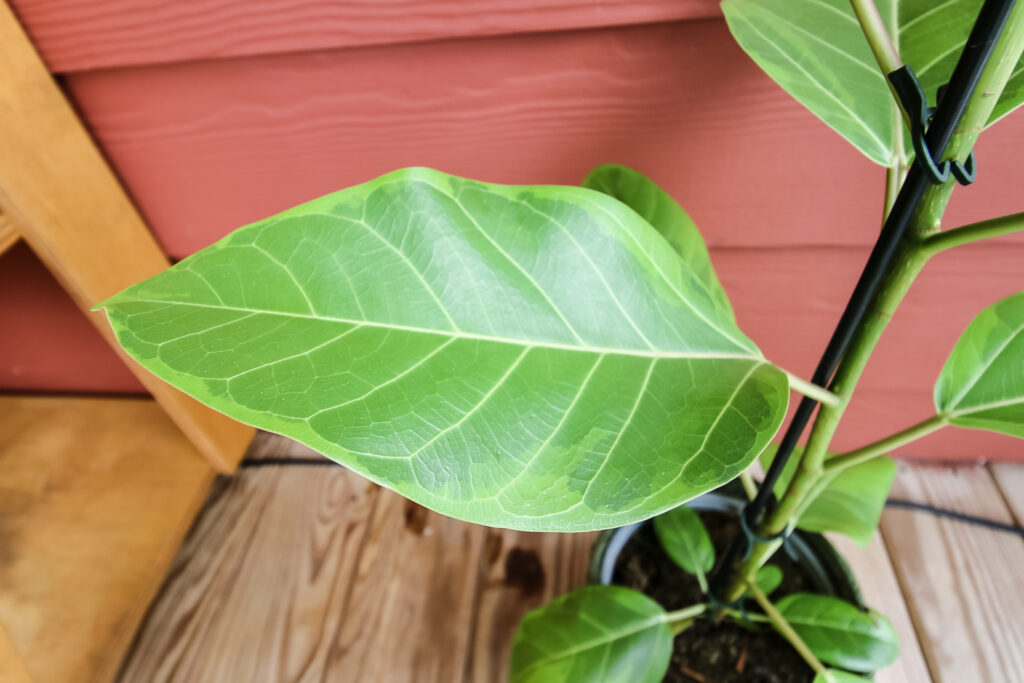
Temperature & Humidity
Ficus Altissima thrives in average to warm temperatures ranging between 65°F (18°C) and 85°F (29°C). It is important to avoid exposing the plant to sudden temperature fluctuations or drafts, which can cause stress or leaf drop.
Maintaining a consistent temperature within this range is ideal for the plant's growth and overall health.
Being native to tropical regions, Ficus Altissima appreciates moderate to high humidity levels. Ideally, the humidity should be around 50% to 70%.
However, it can tolerate lower humidity levels found in most indoor environments.
To increase humidity, you can use methods such as misting the plant with water, placing a humidity tray filled with water near the plant, or using a room humidifier. These measures help create a more humid microclimate around the plant.
It's important to note that while Ficus Altissima can tolerate average room humidity, excessively dry conditions can lead to problems such as leaf browning or increased susceptibility to pests.
Monitoring the humidity levels and providing some supplemental humidity when needed can contribute to the plant's overall well-being.
Fertilizing a Ficus Altissima
An important part of how to care for a Ficus Altissima involves choosing the right fertilizer.
To create wonderful colorful leaves, the plant needs a lot of minerals. We recommend you go for a balanced fertilizer.
This is an excellent fertilizer for Ficus trees.
Also, it should be gentle enough to use with each watering, so you don’t even need to think about a certain watering schedule.
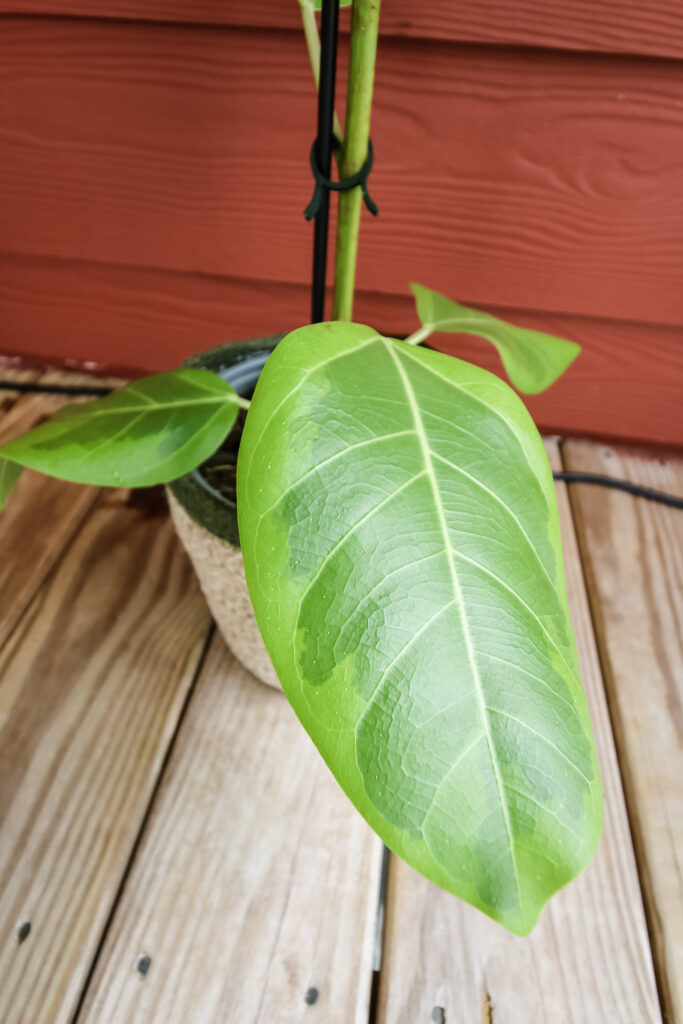
Re-potting a Ficus Altissima
Avoid letting your plant become root-bound, meaning you’ll have to re-pot it yearly.
To do this, gently take the plant out of its pot- don’t just yank it out so that you’ll minimize the stress. Take off as much of the old soil as you can.
Then, add a few inches of new soil to the new pot, place the plant, and fill the remaining bits with new soil. Water it a little bit, and that’s it!
Pruning Ficus Altissima
Pruning is important to maintain its shape, encourage healthy growth, and control its size.
Here are instructions on how to prune Ficus Altissima effectively:
Timing: The best time to prune Ficus Altissima is in early spring or late winter when the plant is entering its active growth phase. Avoid pruning during the colder months when the plant's growth slows down.
Tools: Prepare a clean pair of sharp pruning shears or scissors. Sterilize the tools with rubbing alcohol or a diluted bleach solution to prevent the spread of diseases.
- Assess the plant: Take a close look at your Ficus Altissima and identify the areas that need pruning. Look for dead, damaged, or diseased branches, as well as any branches that are crossing or rubbing against each other.
- Pruning dead or damaged branches: Begin by removing any dead, broken, or diseased branches. Make clean cuts just above the nearest healthy bud or leaf node. This will promote new growth from that point.
- Shaping and size control: If you wish to maintain a specific shape or control the size of your Ficus Altissima, selectively prune branches to achieve your desired form. Consider the natural growth pattern of the plant and aim for a balanced and aesthetically pleasing shape.
- Cutting back long branches: If there are long and leggy branches, you can trim them back to a desirable length. Look for a bud or leaf node along the branch, and make a clean angled cut just above it. This will encourage branching and bushier growth.
- Removing overcrowded branches: Ficus Altissima can develop dense foliage, leading to overcrowding. Identify branches that are crossing or competing for space, and remove those that disrupt the plant's overall structure. Remove branches at their base, close to the main stem.
- Step back and observe: After pruning, step back and assess the plant's shape. Make additional adjustments if necessary to achieve the desired form and balance.
Remember to take it slow and prune conservatively. It's better to make small adjustments and observe the plant's response before proceeding with further pruning.
Regular pruning sessions, carried out annually or as needed, will help maintain the shape and health of your Ficus Altissima over time.
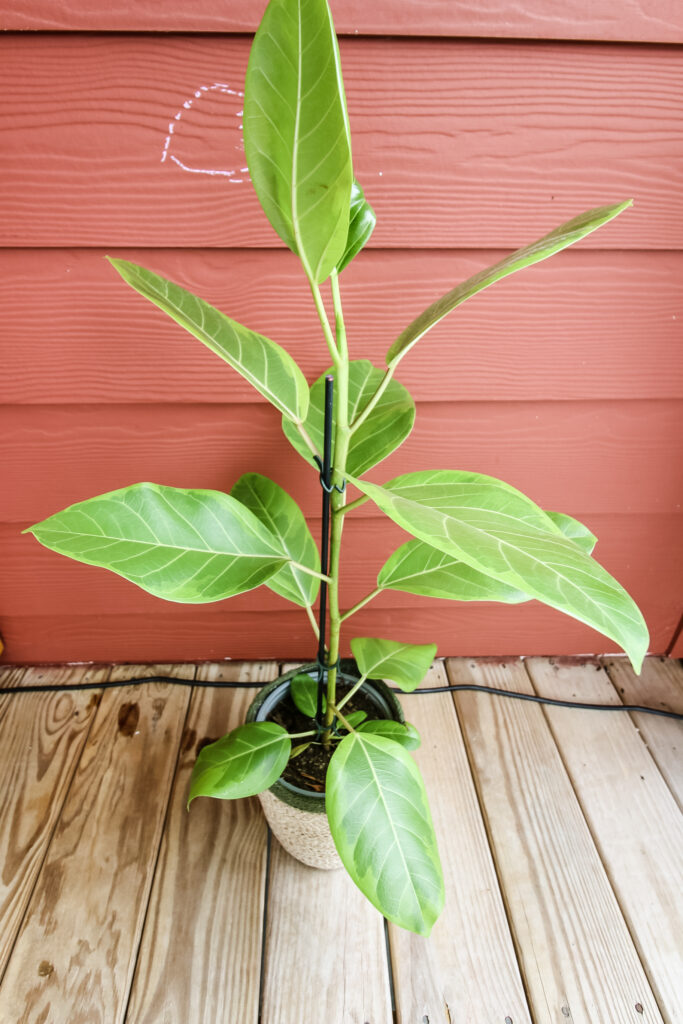
Is Ficus Altissima toxic?
This particular one carries a milky white sap in the stems, and it can irritate when it comes in touch with human skin. The white sap, if ingested, is toxic to humans and animals.
Overall, this particular type of Ficus is something that every homeowner should consider having. Seeing how majestic it looks, taking care of your ficus plant will seem totally worth it!
Ficus Altissima pests
Ficus Altissima, like other Ficus plants, can be susceptible to certain pests and diseases. Here are some common issues that may affect Ficus Altissima and tips for prevention and treatment:
Mealybugs:
These small, white, cottony insects are a common pest for Ficus plants. They typically gather in clusters on the undersides of leaves or along the stems.
To prevent mealybug infestations, regularly inspect your plant for any signs of these pests.
If you spot them, you can remove them by dabbing them with a cotton swab soaked in rubbing alcohol or by using insecticidal soap.
Spider mites:
Spider mites are tiny pests that can cause webbing on the leaves and cause yellowing or stippling of the foliage.
Increase humidity around the plant to deter spider mites and regularly mist the leaves. If an infestation occurs, you can use insecticidal soap or neem oil to control them.
Scale insects:
Scale insects are small, oval-shaped pests that attach themselves to the stems or leaves of plants and feed on their sap. They can appear as bumps or scales on the plant's surface.
To prevent scale infestations, regularly inspect your Ficus Altissima and remove any visible scales using a soft brush or by wiping them off with a cotton swab dipped in rubbing alcohol.
Root rot:
Overwatering or poorly draining soil can lead to root rot, which is a fungal infection that affects the roots of the plant. To prevent root rot, ensure that the potting soil is well-draining and avoid overwatering the plant.
If you notice signs of root rot, such as yellowing or wilting leaves, or a foul odor coming from the soil, take immediate action. Trim away affected roots and repot the plant in fresh, well-draining soil.
Leaf spot diseases:
Ficus Altissima can be susceptible to leaf spot diseases caused by fungal pathogens. These diseases typically manifest as dark, water-soaked spots on the leaves.
To prevent leaf spot, avoid overhead watering and allow the foliage to dry out between waterings. If leaf spot occurs, remove affected leaves, improve air circulation around the plant, and consider using a fungicide as directed.
Regularly inspecting your Ficus Altissima for signs of pests or diseases and taking appropriate preventive measures can go a long way in maintaining its health.
Additionally, providing the plant with proper care, including adequate lighting, appropriate watering practices, and well-draining soil, can help promote its overall vigor and reduce the risk of pest and disease problems.
Ficus Altissima free printable care guide
If you liked this subject and want to read more about it, we got you covered! Download our free PDF Ficus Altissima plant care guide and learn more about caring for this gorgeous plant!
Join the (free!) KeepYourPlantsAlive+ community to access this exclusive printable plant care guide! Once you sign up, you can right click & save the JPG care guide. Or keep scrolling for more!
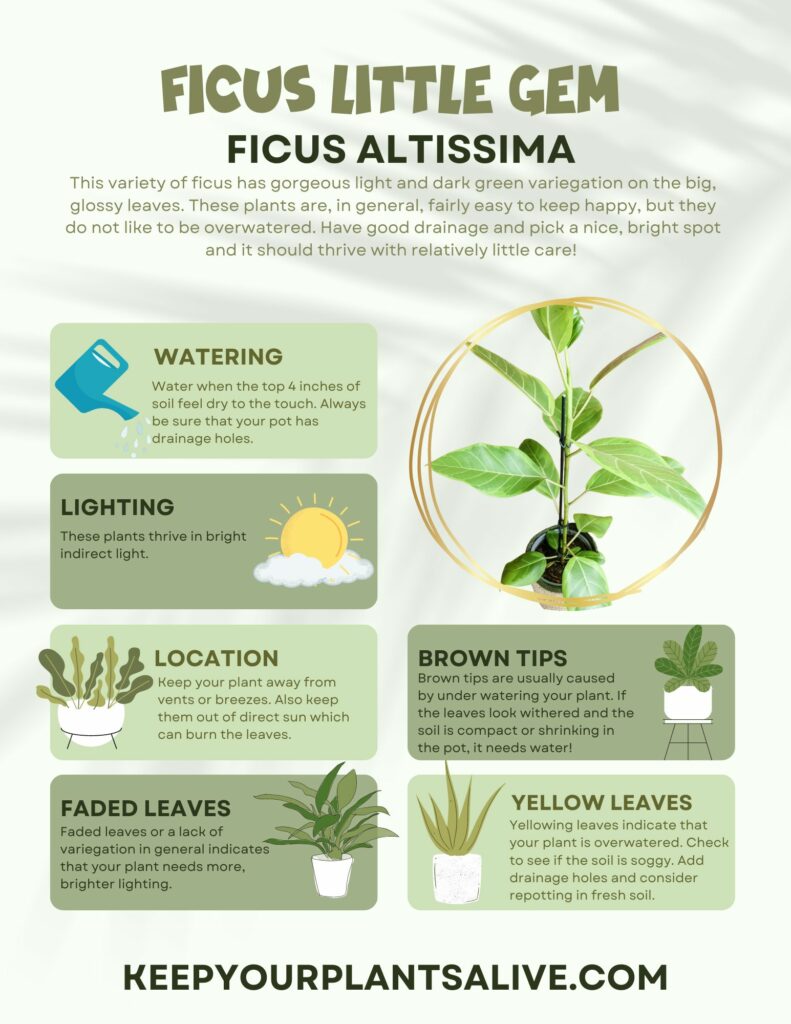
Thanks for reading!


Hey there, I'm Morgan, a houseplant enthusiast from sunny Charleston, South Carolina. Growing up surrounded by my mom's lush orchids and African violets, I discovered the magic of bringing nature indoors. Thanks to the pandemic, I delved deeper into houseplants, discovering their power to uplift moods and transform spaces. I'm here to spill all my secrets, helping you pick the perfect houseplant - and make it happy. Let's keep your plants alive, together! 😊

